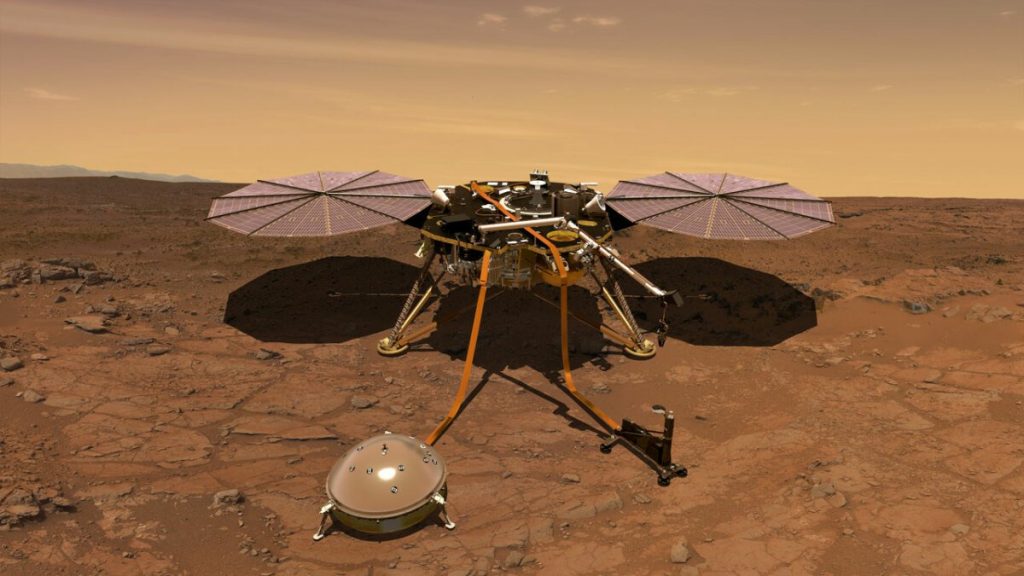
Landmark Mars robot will run out of power, ending historic mission (Image Credit: Mashable)
The Martian dust is relentless.
It’s ended the lives of NASA robots before, by blanketing their solar panels. Amassing dust is now diminishing the power of the space agency’s InSight lander, the first robot sent to reveal the ongoings in Mars’ interior. On Tuesday, NASA announced the lander’s scientific mission — particularly the use of its quake-detecting seismometer — will end sometime during the later part of summer. By the end of the year, the agency expects to completely end the mission.
The lander can now only muster about one-tenth of the power it produced at the start of its mission, in November 2018.
“InSight is probably coming to the end of its scientific life pretty soon,” Bruce Banerdt, InSight’s principal investigator at NASA’s Jet Propulsion Laboratory, said at a press briefing on Tuesday.
But even as InSight experienced a drop in power, it still collected new, unprecedented observations. In early May the robot detected a “monster” magnitude 5 marsquake, by far the strongest quake detected on Mars, and the strongest temblor ever observed on another planet.
The sizable shake underscored that Mars is still very much alive geologically, though this activity pales compared to the incessant quaking and volcanism on Earth. “Mars remains active, just not as active as Earth,” Mark Panning, a planetary scientist and NASA’s InSight lander project manager, told Mashable last week.
-
Compelling Mars photo shows Martian water flowed way more recently than we think
-
The mega-comet hurtling through our solar system is 85, yes 85, miles wide

Credit: NASA / JPL-Caltech
In a few week’s time, InSight’s engineers plan to cut its operating time as power levels continue to fall. They might only run the lander for half the day, or part of the day. When online and detecting quakes, InSight uses as much energy as an electric oven.
At the Tuesday briefing, NASA emphasized that InSight’s mission to probe Mars’ interior was a grand success. The robot detected over 1,300 extraterrestrial temblors. It collected daily weather reports. It detected the red planet’s large, liquid core, and helped researchers map Mars’ inner geology.
A letdown, however, was the failure to deploy the lander’s mole, an instrument intended to drill 16 feet below Mars’ surface and collect unprecedented information about the planet’s internal temperature. But the mole ran into some unexpected soil. Ultimately, it failed to bore more than an inch down.
“Not being able to get the heat flow measurement was probably the biggest disappointment of the mission,” Banerdt said.
It’s likely InSight is now in its final days. It’s possible a dust devil — which are common on Mars — may spin through and clean off the solar panels. This could potentially extend InSight’s mission. But that’s not expected to happen.
All Mars’ robotic missions come to bittersweet ends. But when alive, they beam back insights about a curious desert world, a place we hope to one day visit in person, when a next generation megarocket launches us there.





